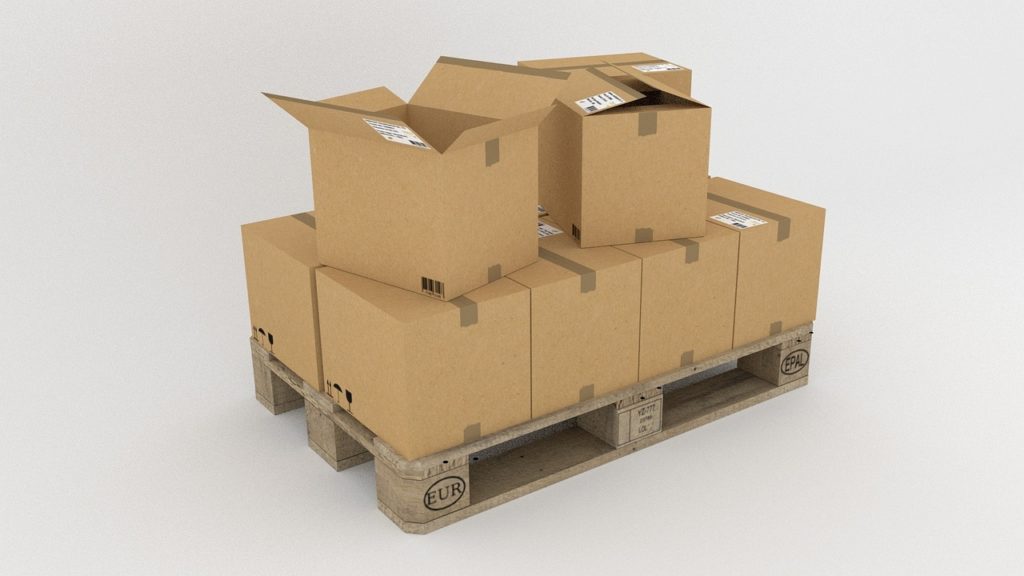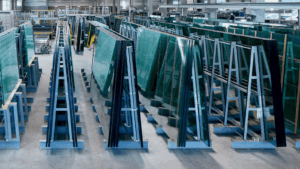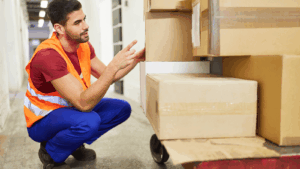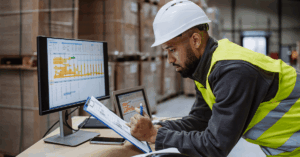Palletization is the art of stacking and protecting goods on pallets.
Whether manual or automatic, it's a key step in the logistics process, right through to transport. Think about renting handling equipment to simplify your employees' lives and optimize your logistics processes.
Palletization : a physical task
There's nothing complicated about Palletization , but it does require considerable effort and the right method to make it run smoothly. With the right equipment, you can save time and palletize more. The right tools and equipment are the key to efficiency and improved ergonomics. Pallet calibration and wrapping are steps that need to be mastered. They rationalize upstream handling, and downstream storage and transport.
The right combination of pallets and cardboard boxes
Whether ISO pallets (1200 x 1000 mm), EURO pallets (1200 x 800 mm, used for export), quarter-pallets or half-pallets, the dimensions of the cartons must be compatible with those of their support. Palletizable cardboard boxes offer a varied choice, and are classified in guides accessible to all professionals. All you have to do is determine the maximum weight of the cartons, choose them according to your merchandise, and fit them into the Pallet. For certain products, palletboxes can be used, a single-piece cardboard box with the exact dimensions of the chosen Pallet .
Stable stacking for easy storage and transport
There are 2 rules to be observed here. The first is to place heavy items (cartons, goods...) on the bottom of the Pallet and then stack lighter items on top. This avoids any risk of damaging or crushing products. The second is to ensure that cartons are tightly packed together: on the one hand, empty spaces completely unbalance the whole, and on the other, maximizing storage surface area makes transport costs more profitable.
Pallets and carefully packed goods
- By placing spacer sheets (honeycomb or solid board, anti-slip sheets) on the bottom of the Pallet and between each level of the stack. They protect the products and ensure that they remain compact on the pallet.
- This is achieved by adding corner protectors and strapping the Pallet with strapping, usually textile or polypropylene. The manual strapping machine is a bit tricky to handle, but a strapping machine makes the operator's job easier, as it enables the ends of the straps to be fixed quickly. The semi-automatic model is even faster. It also avoids the risk of MSD (musculoskeletal disorders) among handlers.
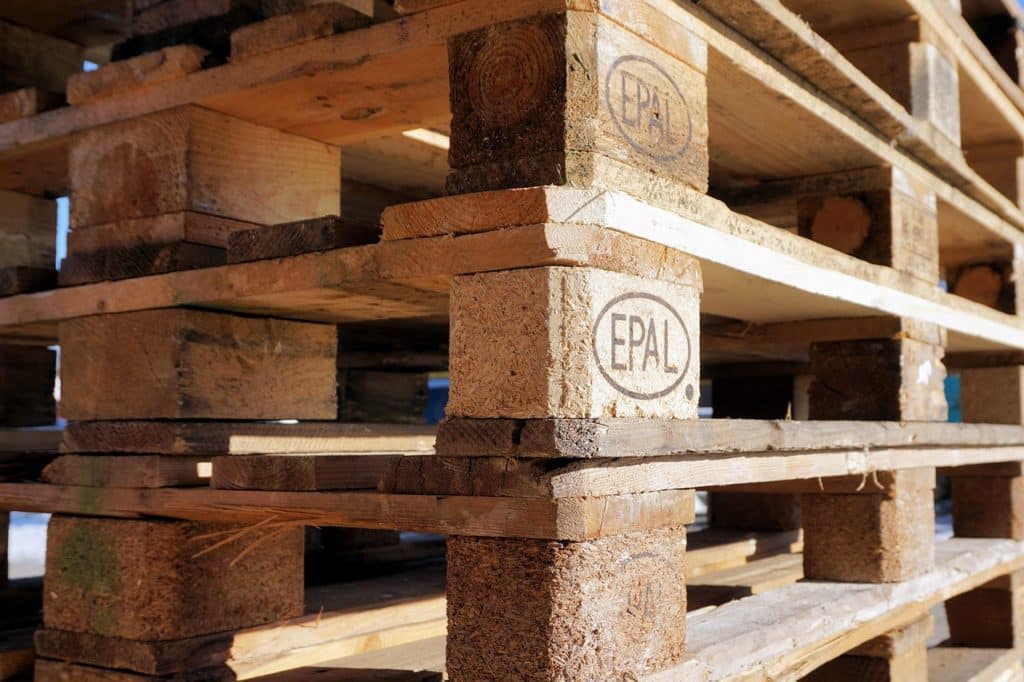
Which film to choose for pallet protection?
What about product storage conditions? Humidity and dust can damage palletized goods. If this is the case, it's best to use a cover or hood (a plastic film placed over the top of the Pallet). The ideal solution is to wrap the pallet in stretch film. It also guarantees the solidity of the packaging of loaded pallets. Cast film is transparent and strong, making it suitable for pallets of all sizes. Pre-stretched film is much thinner and easier to handle, but not suitable for sharp corners. Equipped with unwinders, warehouses will offer improved working postures and an easier task. Even simpler, but designed for very large-scale needs, the shrink gun enables polyethylene shrink film to be applied to pallets in no time at all.
Warehouse handling: danger with Palletization !
For optimum, time-saving handling, signage must be provided on the floor and on the pallets. The Stacking cone prevents pallets from stacking on top of each other, leading to accidents and merchandise breakage. Floor markings delimit the various pallet storage areas, and ensure pedestrian safety within the warehouse, given the risks associated with the presence of vehicles and industrial machinery.

